-
Tyskie Browary Książęce
Tyskie Browary Książęce has been an important part of Silesia’s history for nearly 400 years. It is an architectural gem of the region and, at the same time, a truly modern brewery. This is where the heart of the Tyskie brand beats. Beer has been brewed here continuously since 1629, making it one of the oldest breweries in Poland.
Founded on the initiative of the Promnitz family, Tyskie Browary Książęce flourished at the turn of the 19th and 20th centuries, when owned by a visionary entrepreneur, duke John Henry XI Hochberg. The brewery has always had a significant influence on the local community. It provided work for many generations of residents of Tychy and the surrounding region. In 1893, a railway line was even built to connect the brewery with the train station in Tychy. 1950 marked the opening of the city’s Brewing Industry Technical School. Nowadays, the brewery covers both sides of Mikołowska Street in Tychy. The historical part of the facility is under the care of a heritage conservation officer, with a state-of-the-art bottling plant and distribution centre located right next door.
The brewery produces beers belonging to the Tyskie brand family, with Tyskie Gronie at the forefront, as well as the Książęce specialty collection, including alcohol-free variants.
Explore Tyskie Browary Książęce
Tyskie Browary Książęce opens its doors to everyone interested in the fascinating history of this place and the "Gold of Tychy". It is currently possible to visit the Museum, where a modern, interactive exhibition showcases the 400-year history of the brewery. It is an attraction suitable for all ages. To complete the experience, the offer includes a brewery tour (for adults only) that can cover the bottling line. For those seeking to trigger sensory perceptions, we offer the Tyskie Tasting School (optionally with food pairing). The visit can finish on a high note with a session at the Pod Browarem pub, where you can taste the exceptional, freshest Tyskie Gronie from the Brewery, brewed just a few meters above the venue. Souvenir collectors should definitely check out the Tyskie gadget shop.
The regular offer of the Visitor Centre is enriched by special events: Industriada, Museum Night, night tours and concerts at the brewery. For more information, visit: www.browarytyskie.pl.






The first complete information about the brewery in Tychy, owned by the Promnitz family, appears in the Pszczyna urbarium: “The manor enjoys notable brewing right, one can brew beer here every week, for it brings significant benefits. With an adjacent malt, the brewery is equipped with a copper brew kettle and all kinds of brewing vessels – all that might serve well also for cattle and other needs.”

Nomination of the first Tyskie brewer, Stanisław Staśko from Zbytnela. The document obligates the brewer to diligently supervise all stages of the brewing process and specifies his remuneration in cash and nature.

The beginning of the major expansion of the brewery in Tychy, which owes its greatness to a visionary entrepreneur John Henry XI Hochberg, the Duke of Pszczyna. His impressive fortune encompasses 100 million marks in gold, estates with the surface area of almost 60 thousand hectares, and numerous industrial plants. His title gives name to the brewery. The new complex comprises a brewhouse, a cold store, a malt house with an attic to store barley, two grain expansion facilities with an attic to store malt, a malt mill, as well as drying and ice storing facilities. The brewery is also equipped with a 16 HP steam machine.

John Henry XI Hochberg hires a brewmaster, Julius Müller, who will later become the brewery's director. He implements a then-innovative brewing method with the use of bottom-fermenting yeasts. Thanks to the new technology, production of beer starts growing rapidly, forcing further expansion and modernization of the brewery.

The brewery in Tychy receives electrical lighting – just 11 years after Thomas Edison invented the light bulb.

The construction of the brewery-railway station line in Tychy begins.

Beer production reaches 100,000 hectolitres (10 million litres), placing the brewery among the largest in Europe. The same year, a new, competing brewery called Obywatelski is opened.

The Duke funds the construction of an evangelical chapel next to the brewery, which now houses the Museum of Tyskie Browary Książęce.
The construction of the fourth brewhouse begins, but it is not completed until after the end of the wartime turmoil in 1922. Still in operation today, it remains one of the nicest parts of Tyskie Browary Książęce. The tiles that line its walls come from the grand-ducal manufactory in Karslruhe, while the modern equipment was delivered by the Weigelwerk company from Nysa and the Katowice branch of Siemiens.
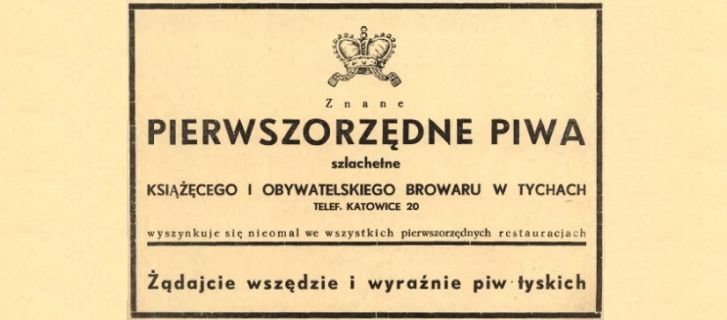
Duke John Henry XV acquires 90% of the shares in the Obywatelski Brewery, bringing the former competitor under the management of the dukes of Pszczyna.

As the result of a referendum, Polish authorities take over the official buildings from the German administration. In August of that year, the town of Tychy is visited by Marshal Józef Piłsudski, who is hosted for breakfast by the local parish priest, Józef Kapica.

The beer from Tyskie Browary Książęce wins a gold medal at an exhibition in Warsaw, where the brewery has its own pavilion. At that time, beer coasters are increasingly used for serving.

On August 31, the brewery celebrates its 300th anniversary. The main festivities for the employees and residents take place in the brewery park, with stands serving free beer and a commemorative mug waiting for every single guest.
At that time, Tyskie Browary Książęce already accounts for 10% of Poland’s beer production.

The brewery is placed under the custodial management of the State Treasury due to tax debts.

On February 1, a joined stock company called “Książęce Browary” is established, comprising three breweries: Książęcy, Obywatelski and the brewery in Siemianowice. The founders are John Henry XV Fürst von Pless Reichsgraf von Hochberg Freiherr zu Fürstenstein, count Alexander Hochberg of Pszczyna and bank director Stanisław Wojtyła. The role of the company director is entrusted to major Mieczysław Paluch, organiser of the Wielkopolska uprising and distinguished leader of the second Silesian uprising. The share capital amounts to PLN 10 million.
On September 3, Tychy is occupied by German troops, and the Książęcy Brewery, along with the entire pre-war company, is taken over by Germany’s so-called Trust Office. During World War II, the facility produces beer for the German military, known as Wehrmachtsbier.

The breweries are taken over by the employees. After securing the assets, cleaning up the area and making necessary repairs, March 6 marks the official opening. Due to lack of raw materials, the production volume during the first year amounts to only 78,000 hectolitres.

The brewery was nationalized, and the ducal crown disappears from labels and company trademarks for several decades.
This period is marked by numerous modernization investments. A major overhaul of the cooling equipment is carried out, and the oak vats in the fermentation cellar are replaced with aluminium and concrete ones.

In 1951, the production capacity increases to 480,300 hectolitres.

For the first time ever, the brewery produces 1 million hectolitres of brewed beer.

A central decision is made to merge the brewery in Tychy with Górnośląskie Zakłady Piwowarskie seated in Zabrze. The Tychy-based breweries play a significant role in the new company, as their products account for 64% of total sales. However, a five-year period of dependency leads to a decrease in production at the facilities in Tychy, resulting in the departure of many skilled professionals.

On January 1, the breweries in Tychy become independent and instantly commence upgrading works.

The ducal crown returns to the labels of the Tyskie beer.

The Tychy breweries become a sole-shareholder company of the State Treasury, which in 1992 takes a new name – Browary Tyskie Górny Śląsk SA.

The brewery witnesses a number of major investments aimed at the improvement of beer quality and increased production capacity. During that time, the malt house is renovated and a new Czech brewhouse with production capacity of six batches a day as well as whirlpool tanks improving the fermentation process are installed. Additionally, a beer stabilization unit is put into operation, a bottling line with a capacity of 24,000 bottles per hour is purchased, and a keg-filling machine is launched.

The merger of Tyskie Browary Książęce and Lech Browary Wielkopolski results in the creation of Kompania Piwowarska SA.
Tyskie is hugely successful in the international arena. It is the first beer in history to win laurels in three consecutive editions of the world's most prestigious industry competition - The Brewing Industry International Awards in Burton-on-Trent in Great Britain. It wins both the gold medal and the Grand Prix, i.e. the so-called "beer Oscar", twice (2002 and 2006). In 2004, it is awarded the Silver Medal.
Another expansion of the brewery begins, including a new brewhouse, a bottling line operating at a speed of 100,000 cans per hour, as well as a fermentation and maturation section. The investment is expected to cost PLN 185 million, with production capacity increasing from 5.5 to 8 million hectolitres of beer per year.
Kompania Piwowarska signs an agreement with the District Water and Sewage Company in Tychy. Under this document, Tyskie Browary Książęce will provide the city with water from its own sources free of charge in special circumstances, such as a natural disaster or war.
Tyskie Browary Książęce expand its tourism offer. In 2022, the Pod Browarem pub is opened, where beers brewed just a few meters above the venue are served: the Książęce specialty collection and, most notably, fresh Tyskie Gronie from the Brewery. In 2023, the brewery tours are expanded to include the modern bottling line, allowing visitors to see the can and bottle filling process with their own eyes.
The brewery continues to invest in line with the principles of sustainable development: modern heat pumps are installed to improve energy efficiency and reduce CO₂ emissions.
-
Lech Browary Wielkopolski
This facility is much younger than the other breweries of Kompania Piwowarska, yet deeply rooted in local history. Lech Browary Wielkopolski carries on a brewing tradition in Poznań that spans over a century and is the successor of two breweries founded here in the late 19th century – Mycielski and Hugger.
The brewery at its current location on Szwajcarska Street was launched on May 16, 1980, the day after the ceremonial “mashing of the first brew,” with the first batches of beer bottled on June 23, 1980. Back then, the brewery’s offer included light and dark beers, malt beverage called Czarna Perła, and Poznań Beer intended for international markets (mainly Sweden). In those days the brewery was at the forefront of brewing technology in Poland and became a training centre for employees from other facilities. Already in the first decade, products from the brewery received a number of distinctions at various beer competitions across Poland.
Today, thanks to numerous investments, Lech Browary Wielkopolski ranks among the largest and most technologically advanced breweries in Europe. Since 1982, the brewery has continuously produced its flagship beer, Lech, which over time has expanded to include a wide range of variants. In addition to Lech Premium, the brand offers low- and non-alcoholic variants, flavoured varieties, shandy-style beverages, and the symbol of Greater Poland – local favourite Lech Pils.





After 7 years of construction, the brewery in Kobylepole (east side of Poznań) commences its operations. Owned by Count Joseph Mycielski, it is one of the most technologically advanced breweries in the country. As its symbol, and later on the trademark, it adopts a coat of arms featuring two galloping white horses.
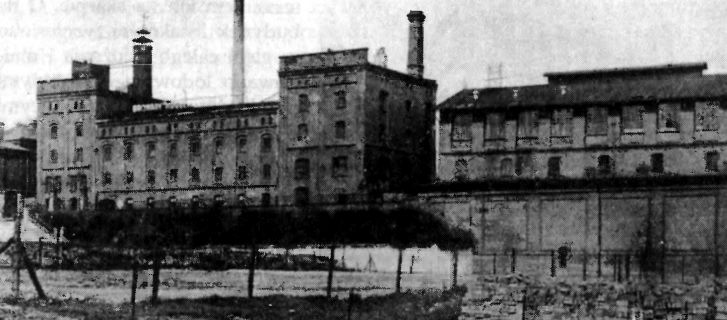
The Hugger Brothers Brewery transforms into a joint-stock company, but its history dates back to 1876, when the owners, Julius and Alfons Hugger, insure an icehouse situated on the plot of land located at what are now Kościuszki and Półwiejska streets. Shortly after, the icehouse is converted into a maturing and fermentation chamber, and a few years later, the complex expands to include a brewing kettle, malt house and drying room. Typically for the industrial architecture of that time, the buildings are kept in the arcade style: red brick facades, semicircular windows and simple details.
The brewery prospers extremely well until World War I and becomes famous for its Pilsner-style Kryształ, dark Munich-style Specjał, and Porter.
Poznań-based entrepreneur Dr Roman May buys shares in the brewery with the intention of producing malt and exporting it to the United States. This idea leads to a crisis for the company, which is additionally struggling with high taxes and hop prices.
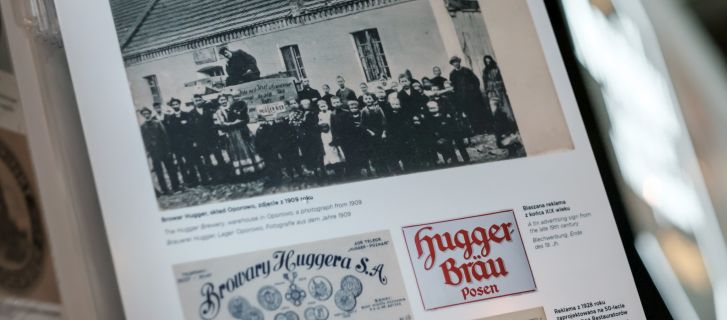
The brewery is leased to the Union Brewery Company of the Restaurateurs' Union, which has as many as 82 shareholders. Investments are halted due to the outbreak of World War II.

Production of beer takes place under the supervision of the German occupation authorities, who decide to set up bunkers underneath the brewery at the end of 1944.

In February, during the battles to liberate Poznań, the brewery gets severely damaged, but production is resumed only a few months later, reaching capacity of 10,000 hectolitres of beer by the end of 1945. The facility still belongs to the Company of the Restaurateurs' Union, but in 1946 undergoes nationalization and placed under the management of the Central Directorate for the Polish Fermentation Industry, with a branch in Bydgoszcz.

Organisational and ownership changes lead to the creation of Poznańskie Zakłady Piwowarsko-Słodownicze, a fairly large company for the times of the Polish People's Republic (PRL). It encompassed: the old brewery at Półwiejska street (Huggers), the Kobylepole brewery (Mycielski), the Lackowski brewery on Kościelna Street as well as facilities in Ostrów, Krotoszyn, Bojanów, Grodzisk Wielkopolski, Czernków, Trzcianka, Mirosław, Śmigiel, Nowy Tomyśl, Wolsztyn, Września, Gniezno and Konin, plus malt-houses in Poznań and Stawiszyn.

Thanks to the efforts and perseverance of Tadeusz Kaczorowski, the then director of the Poznań breweries, construction of a brewery in Franowo, which can brew 1 million hectolitres of beer per year, and a malt house with a production capacity of 50 thousand tons of malt per year, is underway. The new brewery is built under the careful supervision of the chief designer Stefan Kwiatkowski from the Industrial Fermentation Design Office in Warsaw, which has developed full technical and economic documentation. The brewing facilities are erected on a 17 ha plot of land. The key argument behind the brewery’s location is its adjacency to the Poznań-Franowo junction station (a rail siding is connected to the plant). Thanks to implementation of various innovative design and technology solutions, the brewery is considered a technological and architectural masterpiece of the communist era.

The Franowo Brewery is launched on May 16, the day after the ceremonial "mashing of the first brew." The technological startup is overseen by the chief technologist, Zdzisław Zając, and the head brewer, Andrzej Piotrowski. The Hugger Brewery closes its doors in June – although it has a production capacity of 130,000 hectolitres of beer annually, there is no room for further expansion.
The first batches of beer are bottled in the new brewery on June 23 and become available for sale the very next day. The production facility supplies the PRL-era market with light and dark beers, as well as the malt beverage Czarna Perła. It also brews Poznań Beer, intended for export markets (mainly Sweden). The brewery is at the forefront of brewing technology in Poland and starts serving as a professional training centre for employees of other facilities. In its first ten years, the Poznań brewery earns numerous awards in national beer competitions, including for its dark special beer (9%), Czarna Perła, and the predecessors of today's Lech Premium and Lech Pils beers - Lech beer itself, which won third place and a bronze medal in 1986.
In October, the brewery produces 9,660 hectolitres of the new Lech beer, which will become the brewery's flagship product. It is a Pilsner-style beer, produced using the classic method, with a distinct hoppy aroma, refined bitterness, and a rich, long-lasting foam. The name is coined by the brewers running the facility at that time.
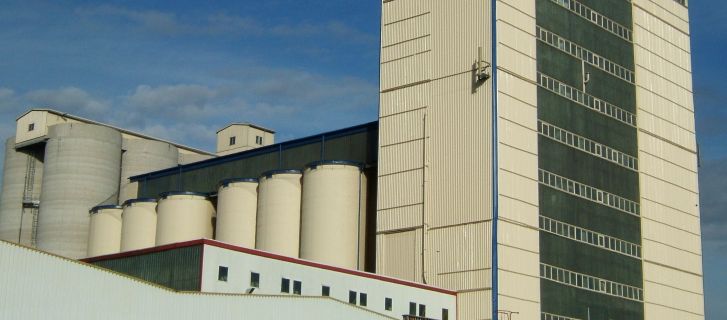
The biggest malt-house in Poland is launched. It is based upon French technology and its annual production capacity amounts to 50,000 tons of malt.

The commercialization process begins. A sole shareholder company of the State Treasury is established under the name Lech Browary Wielkopolski SA. The new name reflects the brewery’s marketing strategy focused on consistently building an easily recognisable image for the company and its leading brand, Lech Premium. Lech Browary Wielkopolski SA runs an unprecedented advertising campaign, associating the Lech brand with the colour green, symbolizing purity, joy and youth.

Technological investments begin. The 10,5 beer is introduced to the market, accompanied by a large advertising campaign with the slogan "Welcome to the club." The brand quickly gains impressive popularity.

The merger of Tyskie Browary Książęce and Lech Browary Wielkopolski results in the creation of Kompania Piwowarska SA.
The brewery receives the ISO 14001 environmental certification.

A company pub is opened, where employees of the brewery can enjoy the golden beverage, particularly the favourite beer of the Greater Poland region – Lech Pils.
Built in just four months, the new brewhouse is now operational.
The brewery's production capacity now reaches 5.6 million hectolitres of beer per year. By the end of 2005, a new bottling line is installed, designed for filling non-returnable bottles (60,000 per hour), and in the following months, an environmentally friendly gas-fired boiler room is added.
The beginning of a long-term collaboration between two leading brands from Greater Poland – Lech Pils and KKS Lech Poznań. In the following year, Lech Pils, as the club's sponsor, organizes numerous campaigns aimed at fans, with the most spectacular one being "Placing the Legend at Bułgarska Station" – the restoration and transportation of the historic Ty51-183 steam locomotive to the Poznań stadium.
The construction of a new fermentation plant and bottling line commences. The modern and eco-friendly bottling line can fill 60,000 returnable bottles per hour. Worth around PLN 100 million, the investment aims to increase the brewery's flexibility, among other things.
The first fifteen years of the new century mark a period of intense growth for the brewery and significant investments, including a new hall covering 2,400 m², a bottling line, a canning line, expansion of fermentation, increased filtration efficiency, construction of a new brewing kettle, boiler room and wastewater neutralizer.
A bottle collection point is launched next to the brewery, where bottles from any beer producer (not just from Kompania Piwowarska) can be returned without a receipt in exchange for a deposit refund.
Lech Browary Wielkopolski celebrates its 40th anniversary. Over four decades, the production capacity of the facility has increased from 1 to 8 million hectolitres of beer annually.
Thanks to the PPA agreement signed in 2019 between Kompania Piwowarska and RWE, the share of renewable electricity is now sufficient to cover the energy demand for the production of Lech beer.
The LECH Nowy Staw III RWE wind farm begins operation, as a result of the 2019 contract. The facility is named after the Poznań brewery and its most important brand, although it generates electricity for all three breweries owned by Kompania Piwowarska.
Modern heat pumps are installed at the brewery, enabling significant energy savings and contributing to Kompania Piwowarska's goal of achieving carbon neutrality across its breweries by 2030. The investment in an advanced energy recovery system based on heat pumps, covering Tychy and Poznań, amounts to PLN 25 million.
Construction begins on a new high-bay warehouse with a surface area of 12,000 m², standing 40 meters tall and capable of holding 40,000 pallets. The PLN 200 million project is the largest logistics investment in the company's history.
-
Browar Dojlidy
Founded in 1768 in Białystok, the Dojlidy Brewery has had a turbulent history, with ownership frequently changing hands - it belonged at various times to the Branicki, Radziwiłł, Rüdiger, and Lubomirski families, among others. Yet despite these historical upheavals, beer from the Białystok-based brewery has always enjoyed a great reputation among the fans of the golden beverage. The current facility has operated continuously for over 70 years. It was the last to join Kompania Piwowarska and it has grown significantly under the company’s wings, becoming one of the most important businesses in the Podlasie region.
The efforts and passion of local brewers gave life to the widely popular Żubr brand. Initially enjoyed only by local beer enthusiasts, it has now become the most popular beer in Poland and Kompania Piwowarska's second largest export brand.






According to archives and an inventory compiled after the death of Grand Crown Hetman Jan Klemens Branicki, a large brewing facility was established in 1768 on the Dojlidy estate, owned by the Branicki family. This year is recognized as the founding date of the Dojlidy Brewery. The brewery's name originates from the Baltic tribe that inhabited the northeastern regions of Poland centuries ago.
The Dojlidy estate is owned by the Radziwiłł family.
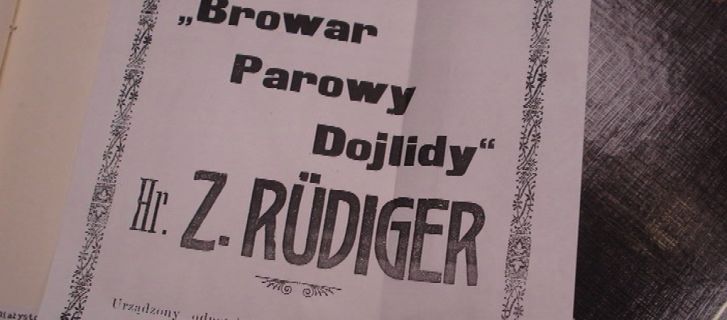
At the end of the 19th century, the estate becomes the property of the Rüdiger family. Under their initiative, a small classical-style palace is built on the site of the former manor house, and in 1891 a steam brewery is established nearby, bringing in considerable profits.
The brewery is destroyed by fire and rebuilt under the supervision of Józef Lenczewski-Samotya.

During World War I, the Dojlidy estate and its brewery suffered minimal damage; however, in 1915, the Russians removed all the equipment from the brewery.

The estate passes into the hands of Prince Jerzy Rafał Lubomirski and continues to flourish. During the interwar period, production reaches approximately 75,000 hectolitres of beer, and the brewery employs around 150 workers. The Dojlidy beer is sold in 40 outlets across Poland's eastern territories, including Grodno, Brest, and Vilnius, even reaching Warsaw. At the end of the 1920s, the brewery is a significant enterprise on the economic map of Poland – it ranks seventh in terms of the number of beers brewed and is the largest plant of this type in the eastern part of the country. It remains under Lubomirski ownership until 1939.

During World War II, the Dojlidy Brewery is seized by the Germans, who use it to brew beer and partially damage the facility in 1944.
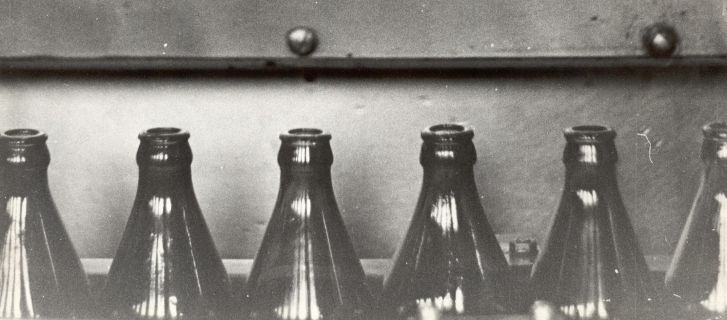
On February 12, the Dojlidy brewery is taken over by the state.

The brewery resumes production after the war and becomes a part of the Brewing and Malting Industries in Bialystok.

The brewery becomes a part of Zakłady Piwowarskie, the owner of breweries in Suwałki and Łomża.

The city of Bialystok was growing rapidly over the years. After the strikes at the beginning of 1981, food products, including beer, were quickly disappearing from store shelves. Solidarność demanded power. The night of December 12-13 marked the beginning of mass arrests and the authorities declared martial law over the country.

The brewery begins production of Pepsi Cola and immediately takes a top spot in the Vienna ranking evaluating the quality of the beverage.
The beer from the Białystok brewery gains recognition. On April 30, Zakłady Piwowarskie receives the Gold Medal for the dark strong beer Porter Dojlidy and the Gold Medal for the light strong beer Magnat Dojlidy at the 6th Polish Beer Festival in Łódź. The following year, Dojlidy Złote and Dojlidy Magnat receive the Beer of the Year 1993 title from the Beer Club at Piwnica pod Jaszczurami in Kraków.

In December, the German brewing concern Binding Breuerei from Frankfurt becomes the majority shareholder of Zakłady Piwowarskie.
On March 3, the name Zakłady Piwowarskie is changed to Dojlidy Brewery. By the end of the 1990s, a major modernization is completed: a new brew house is built, along with a beer filtration station, filling lines – for cans, bottles, and kegs, laboratories, and a finished goods warehouse.

On February 4, Kompania Piwowarska acquires a majority interest in the Dojlidy Brewery.
The Żubr beer brand enters the market, and with the "Mruczando" commercial it launches its long-standing, extremely popular and award-winning advertising campaign. The distinctive advertisements, featuring the brand's icon – Żubr (the Polish word for a bison) and humorous, double-meaning punchlines related to beer, draw inspiration from life in the Białowieża Forest. These ads win the hearts of Poles, and Żubr gradually rises to become one of the favourite beers in the country.
Major investments are underway: the brewery is expanded with a new brewhouse and cellars, a bottling line for filling non-returnable bottles (at a speed of 60,000 bottles per hour) and additional storage space. As a result, production capacity increases nearly threefold, reaching 2.2 million hectolitres annually (up from approximately 800,000 hectolitres in 2003). The overall cost of the expansion and modernization amounts to around PLN 150 million.
The tanks at the Dojlidy Brewery are decorated in a unique way: they resemble five giant cans of Żubr beer. To paint the 2,000 square meters of surface, climbers use 200 litters of paint and almost 500 spray paints.
The Dojlidy Brewery celebrates its 250th anniversary. On this occasion, the brewery's logo is refreshed, and the tanks are repainted.
The administrative building from 1901 belonging to the Dojlidy Brewery complex is added to the register of historical monuments of the Podlaskie Voivodeship.
Żubr begins supporting endangered species and encourages consumers to do the same through special labels and advertising campaigns. This initiative continues in the following years. The brand’s environmental activities, initiated through its collaboration with the Białowieża National Park, are formalized with the creation of the Żubr Fund. Its mission is to preserve the most valuable aspects of wildlife and raise awareness of the importance of protecting its richness. To achieve this, the Fund collaborates with national parks, scientific institutions and non-profit organizations, implementing both long-term projects and those requiring immediate action for nature conservation.
Żubr makes its debut on the list of the world’s 50 most valuable beer brands, becoming the first Polish brand to do so. It takes the 48th place in the ranking prepared by the consulting company Brand Finance.










